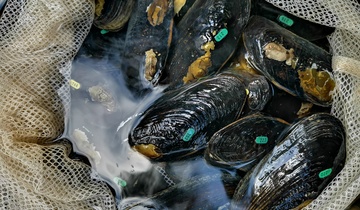The new Lake Restoration Handbook - A New Zealand perspective
Lakes across the globe require help.
The Lake Restoration Handbook: A New Zealand Perspective addresses this need through a series of chapters that draw on recent advances in modelling and monitoring tools, citizen science and First Peoples’ roles, catchment and lake-focused restoration techniques, and policy implementation.
New Zealand lakes, like lakes across the globe, are subject to multiple pressures that have increased in severity and scale as land use has intensified, invasive species have spread and global climate change has become manifest. This book builds on the popular Lake Managers Handbook (1987), which provided guidance on undertaking investigations into, and understanding lake ecosystems in New Zealand, and it broadens the context by providing international perspectives written by overseas researchers in each chapter
The handbook synthesises contemporary issues related to lake restoration and rehabilitation, integrated with social science and cultural viewpoints. Key issues are elaborated authoritative topic-area summaries by renowned scientists and practitioners from across the globe.
The book examines the progress of lake restoration and the new and emerging tools available to managers for predicting and effecting change.
The handbook features the work of 26 authors, 13 of whom are from NIWA, and was edited by Dr Clive Howard-Williams, Dr David Hamilton, Dr Kevin Collier and the late Dr John Quinn.
NIWA Chief Science Advisor, Dr Clive Howard-Williams, says, “As with lakes elsewhere in the world, our lakes are the receiving waters for the catchments that they occur in, so any impacts on land will affect lakes downstream. This means that land development and lake ecosystem health are mutually inseparable.
This book points out that harmful algal blooms, deoxygenation, species extinctions and risks to human health are a consequence of poor catchment management. Restoration will involve communities in catchments deciding on the values they want maintained and enhanced, and these will include the values provided by lakes,” says Howard-Williams.
Additions to the book include international feature boxes that reinforce key concepts of lake restoration and provide commentary on restoration approaches in different parts of the world. These emphasise the widespread similarity of threats to lakes.
The unique position of restoration management in New Zealand comes through strongly in the chapters on socio-cultural considerations including; citizen science and the role of Māori in providing information and concepts to a truly collaborative lake restoration programme. This programme points to knowledge of indigenous peoples and the need for a more holistic approach to lake management. The book ends with a series of steps to improve decision making and practical actions.”
This book will be a valuable resource for natural and social scientists, policy writers, lake managers, and anyone interested in the health of lake ecosystems.
You can purchase this book online now.






